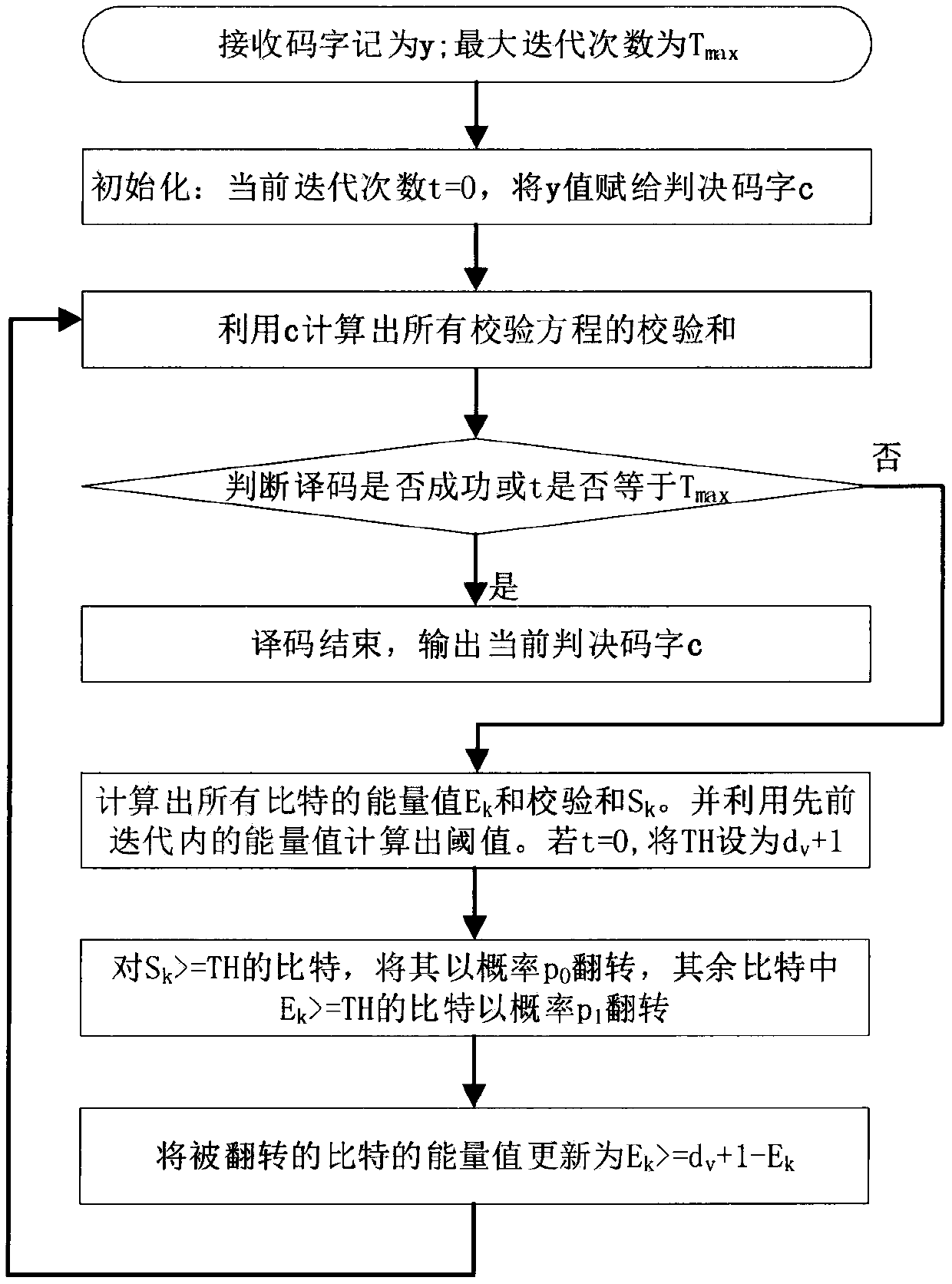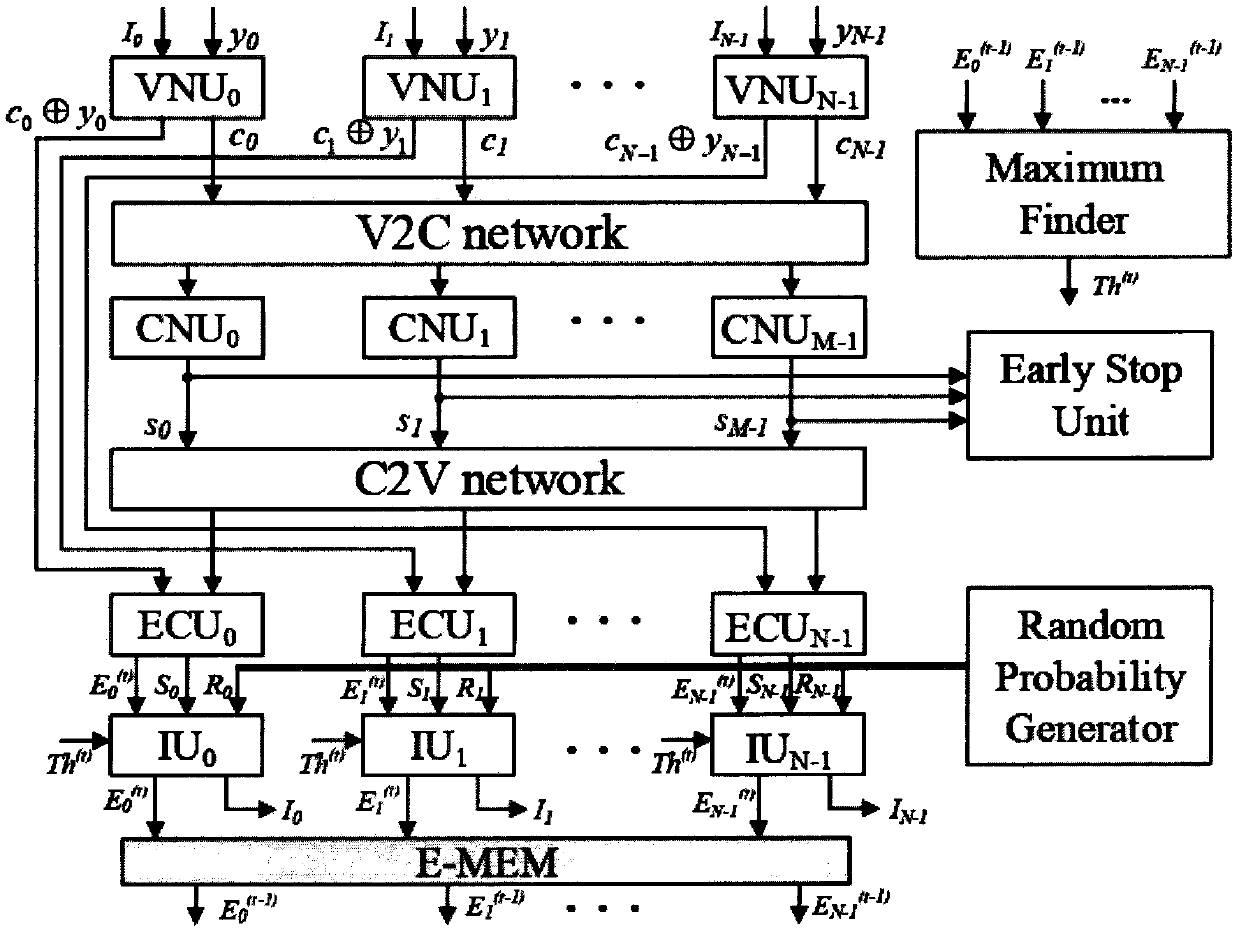Efficient bit flipping decoder based on self-adaptive threshold value
An adaptive threshold and bit flipping technology, applied in the field of decoder design, can solve problems such as unsuitable application scenarios and increase overall complexity, and achieve the effects of reducing decoding delay, high throughput, and accurately matching the decoding process
- Summary
- Abstract
- Description
- Claims
- Application Information
AI Technical Summary
Problems solved by technology
Method used
Image
Examples
Embodiment
[0028] Embodiment: Take the codeword whose code length is 1296, code rate is 1 / 2, column weight is 3, and row weight is 6 as an example. Figure 4 It is a schematic diagram of the performance simulation of the decoder of the present invention. The maximum number of iterations for all BF algorithms is set to 300, and the maximum number of iterations for the OMS algorithm is set to 20. It can be seen that compared with the current optimal TRGDBF algorithm, the SABF disclosed in the present invention can improve the performance by an order of magnitude while having a shorter critical path. When the maximum number of iterations is increased to 1000, the performance of SABF can be further improved by an order of magnitude, and the decoding performance of OMS algorithm can be achieved. In addition, the proposed SABF decoder architecture is described in Verilog language, and the obtained RTL is synthesized with Synopsys tools. The technology used is TSMC 90nm CMOS technology. Figu...
PUM
 Login to View More
Login to View More Abstract
Description
Claims
Application Information
 Login to View More
Login to View More - R&D
- Intellectual Property
- Life Sciences
- Materials
- Tech Scout
- Unparalleled Data Quality
- Higher Quality Content
- 60% Fewer Hallucinations
Browse by: Latest US Patents, China's latest patents, Technical Efficacy Thesaurus, Application Domain, Technology Topic, Popular Technical Reports.
© 2025 PatSnap. All rights reserved.Legal|Privacy policy|Modern Slavery Act Transparency Statement|Sitemap|About US| Contact US: help@patsnap.com



